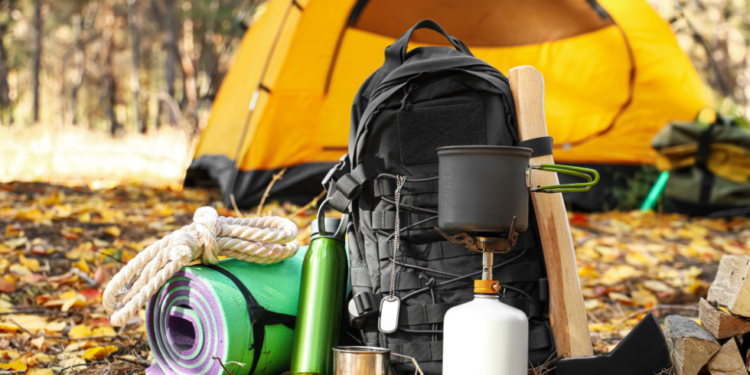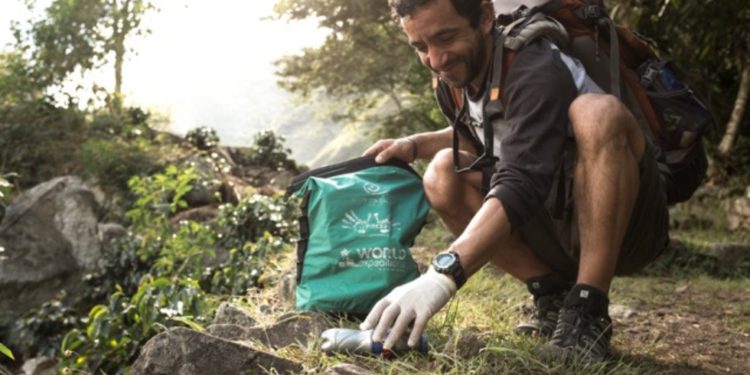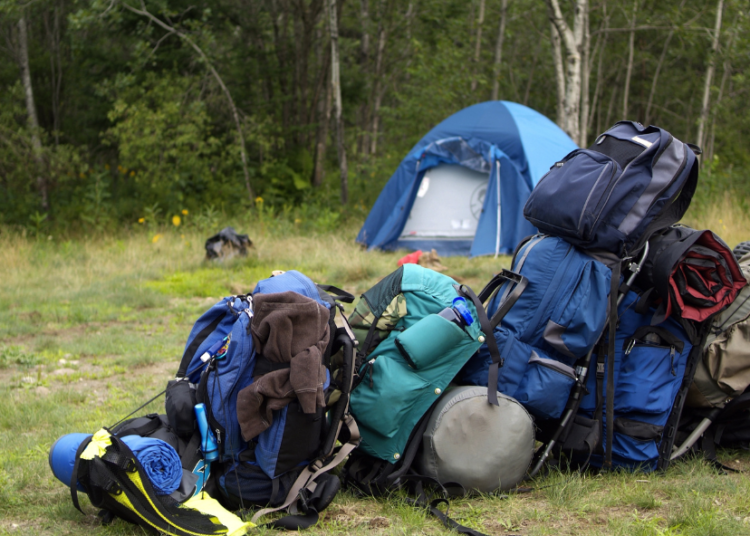For the adventure-hungry souls and wilderness wanderers, few experiences rival the thrill of camping and backpacking. It’s a journey that starts where the paved road ends, where city noise gives way to nature’s serenade, and where you unite with nature. But to put on this thrilling expedition, you need more than just courage and a sense of wonder; you need The right gear and a treasure trove of knowledge.
In the following guide, we’re about to unveil the secrets of successful camping and backpacking, catering to the needs of adventurers whose hearts beat in sync with the rhythm of nature. So, gather your gear, lace up your hiking boots, and let’s dive into the world of Camping and Backpacking – where every trail is an invitation to the extraordinary.
Camping and Backpacking: A Journey to the Wild

Camping and backpacking represent the true root of adventure. These activities are a declaration of independence from the hustle and bustle of city life, a path to reconnect with nature, and an escape into the unknown wildland. So, let’s start on this thrilling adventure to discover the very heart of camping and backpacking.
Camping and Backpacking a Great Activities, It’s about trading the concrete jungle for the beauty of Mother Nature. The silence of the woods, the whisper of the wind, and the awe-inspiring beauty of unknown places are the rewards of this adventure. It’s an opportunity to reconnect with the joy of simplicity, breathe in the cleanest air, and rebuild the connection with the earth.
In the world of camping and backpacking, there are no barriers. These adventures are for the dreamers, the wanderers, the young and the old, the daring and the contemplative. Couples seeking quality time, solo travelers in search of self-discovery, and friends desiring to create lasting memories—all are welcome. From the seasoned trekker to the novice explorer, the call of the wild beckons.
For those who crave the outdoors, camping and backpacking offer a portal into a world where time is marked by the rise and set of the sun, and where the night sky, unspoiled by city lights, reveals its splendor. It’s an adventure for those who yearn to venture beyond comfort zones, for those who find comfort in simplicity, and for those who believe that the best stories are written by nature.
In the upcoming chapters, we’ll uncover the gear, the tips, and the tales that define the realm of camping and backpacking. Get ready to embrace the call of the wild and embark on an adventure that promises moments of sheer wonder, self-discovery, and a profound connection with the world’s most extraordinary playground.
Choosing the Right Camping and Backpacking Destination: An Adventurer’s Guide
Selecting the ideal camping and backpacking destination is the gateway to a thrilling outdoor adventure. Your choice should match your adventure level, whether you’re a seasoned backpacker or a casual camper. Each destination offers its own natural wonders. Decide if you want to explore dense forests, dramatic mountains, serene lakeshores, or vast deserts.
Consider the season when planning your trip. Different destinations shine in different seasons, from summer’s warmth to winter’s snowy wonderland. Wildlife encounters can be part of the adventure. Research the kind of wildlife you’d like to see and choose a destination accordingly.
Destination regulations and permits are crucial. Ensure you’re aware of the rules and have the necessary permits for a legal and responsible trip. Think about accessibility and facilities. Some prefer primitive experiences, while others appreciate designated campgrounds with amenities.
For a deeper connection, explore destinations with rich local culture and history. Learn the stories and heritage that make a place unique. Consider the level of solitude or camaraderie you desire. Some thrive on solitude, while others seek the company of fellow adventurers.
Your chosen destination is where your adventure unfolds, offering not just breathtaking landscapes but also unforgettable memories, personal growth, and a deeper connection to the world around you. So, research, plan, and pack your bags for your next great outdoor adventure.
Gear Essentials: What to Pack

Camping and backpacking are thrilling adventures that allow you to connect with nature and escape the daily grind. However, the success of your outdoor journey depends on the gear you carry. Whether you’re going into the wildland for a night or going on a multi-day backpacking expedition, the right equipment is essential to ensure your safety, comfort, and overall enjoyment.
1. Tent: Your portable shelter, the tent, is your haven in the wild. It shields you from the elements, provides a cozy sleeping space, and offers protection from curious critters. When selecting a tent, consider its size, weight, and weather resistance. For backpacking, opt for lightweight and compact options, while car campers can prioritize space and comfort.
2. Sleeping Bag: A quality sleeping bag is your ticket to a restful night’s sleep. Choose one suited to the season and climate you’ll encounter. Sleeping bags are categorized by temperature rating, so select the appropriate one to stay warm during cold nights and cool during warmer seasons.
3. Sleeping Pad: To insulate yourself from the cold ground and add a layer of comfort, a sleeping pad is indispensable. There are various types available, including inflatable air mattresses and foam pads, catering to different preferences and needs.
4. Backpack: Your backpack is a crucial piece of gear, especially for backpacking adventures. It should fit well, distribute weight evenly, and provide convenient access to your gear. Consider its capacity, as it determines how much you can carry. Ultralight backpacks are favored by serious backpackers.
5. Cooking Stove: A portable cooking stove allows you to prepare warm meals in the wild. Choose from options like gas stoves, liquid fuel stoves, and solid fuel stoves, depending on your cooking needs and fuel availability.
6. Food and Water: Pack nutritious meals that require minimal preparation, such as dehydrated or freeze-dried options. Ensure you have access to clean water. Carrying a water filter or purification tablets is essential for backpackers who rely on natural water sources.
7. Headlamp: When the sun sets, a reliable headlamp becomes your guiding light. Whether you’re reading in your tent, cooking dinner, or navigating dark trails, a headlamp is a versatile and indispensable tool.
8. First-Aid Kit: Safety comes first. Your first-aid kit should contain bandages, antiseptic wipes, pain relievers, and any necessary medications. Tailor it to your specific medical needs and the duration of your trip.
9. Sunscreen: Protect your skin from the sun’s harmful rays. Choose a broad-spectrum sunscreen with a high SPF rating to prevent sunburn and skin damage.
10. Insect Repellent: Insect repellent keeps pesky bugs at bay, preventing itchy encounters with mosquitoes, ticks, and other nuisances. Consider the insect species prevalent in your destination and select the appropriate repellent.
11. Map and Compass: In the age of GPS, it’s easy to overlook traditional navigation tools. However, a map and compass are indispensable for backup navigation, providing a sense of security in case your electronic devices fail.
12. Other Important Gear: A versatile knife, multi-tool, and a sturdy flashlight are your outdoor Swiss Army essentials. These tools serve multiple purposes, from food prep to emergency repairs.
Select your gear thoughtfully, matching it to the type of camping or backpacking you’ll be undertaking. Backpackers prioritize lightweight and versatile gear, while car campers can afford to indulge in comfort. With the right equipment in tow, you’re well-prepared to embark on an adventure filled with stunning landscapes, starry nights, and the unparalleled freedom that nature offers. So, gear up, hit the trails, and create memories that will last a lifetime.
Tips for Adventure Lovers

Camping and backpacking aren’t just outdoor activities; they’re journeys into the heart of nature, tests of self-reliance, and opportunities for profound exploration. To make the most of your adventures, consider these essential tips that cater to both beginners and seasoned outdoor enthusiasts.
1. Plan Your Trip: Meticulous planning is the foundation of a successful camping or backpacking trip. Choose your destination, understand the terrain, and be aware of the weather conditions. Research the regulations and permit requirements to ensure a smooth and legal experience.
2. Leave No Trace: Respect nature by adopting the Leave No Trace principles. Minimize your impact by packing out all waste, disposing of trash properly, and avoiding damage to flora and fauna. Preserve the wilderness for future generations.
3. Be Prepared for All Conditions: Nature is unpredictable. Whether it’s an unexpected rainstorm or a sudden temperature drop, always be ready for changing conditions. Pack versatile clothing and gear to adapt to different situations.
4. Tell Someone Where You’re Going: Safety is paramount. Inform a trusted person about your trip details, including your destination, itinerary, and expected return date. In case of an emergency, this information can be a lifesaver.
5. Get Off the Beaten Path: While popular trails have their charm, consider venturing off the beaten path. Exploring less-visited areas not only offers solitude but also opens the door to hidden gems and unique experiences.
6. Challenge Yourself: Embrace the challenge. Push your boundaries and step out of your comfort zone. Camping and backpacking can be physically demanding, but the rewards are worth the effort. Discover your own limits and exceed them.
7. Be Prepared for Anything: The wild is unpredictable, and surprises are its essence. Equip yourself with essential gear, including first-aid supplies, navigation tools, and emergency provisions. Prepare for the unexpected, and your journey will be one of resilience and unforgettable encounters.
Conclusion
In the world of camping and backpacking, adventure is your guiding star. With the right gear and knowledge, you can unlock the gateways to breathtaking landscapes, starlit nights, and a deeper connection with nature. Whether you’re conquering challenging trails or finding solace in the great outdoors, these essentials and tips are your allies. So, heed the call of the wild, follow your adventurous spirit, and let the beauty of nature embrace your soul. Your next journey into the wild awaits, promising memories that will forever light your path.















